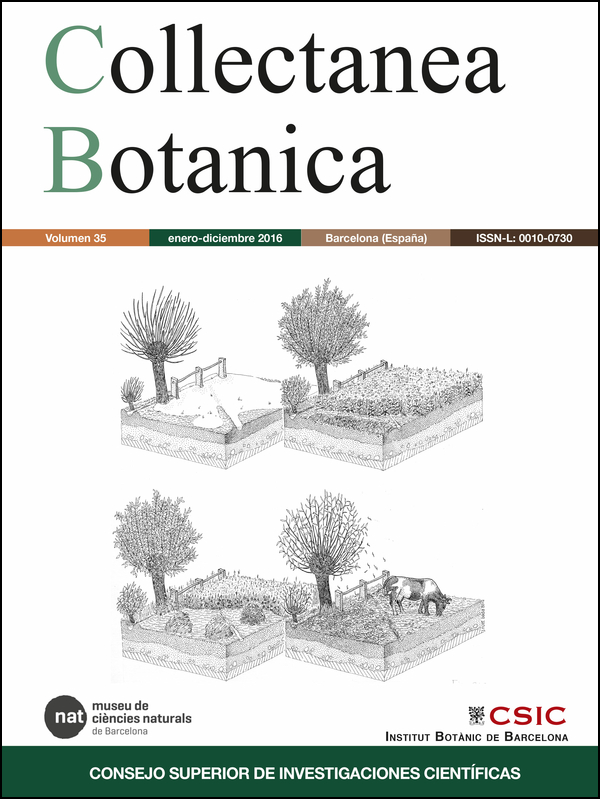Youngia japonica (L.) DC. (Compositae), recently detected in Barcelona
DOI:
https://doi.org/10.3989/collectbot.2016.v35.005Keywords:
Crepis, gardens, Iberian Peninsula, introduced species, YoungiaAbstract
Youngia japonica, introduced accidentally in urban garden areas, is recorded for the first time from the Iberian Peninsula. It has maintained its presence in the place where it was first observed without expanding, and has reappeared over the following years. A possible means of introduction is along with Zoysia, species of grass used for forming lawns as an alternative to Bermuda grass.
Downloads
References
Siverio Núñez, A., Sobrino Vesperinas, E., Rodríguez de la Torre, H. A., Reyes-Betancort, J. A. & Santos Guerra, A. 2013. Nuevos xenófitos de elevada capacidad invasora para la flora canaria. In: Notas corológico-taxonómicas de la flora macaronésica (Nº 148-156). Botánica Macaronésica 28: 165–173.
Slanis, A. C. & Perea, M. C. 2011. Youngia japonica (Asteraceae, Lactuceae), una novedad para la flora adventicia de Argentina. Boletín de la Sociedad Argentina de Botánica 46: 139–143.
Urbatsch, L. E., Pruski, J. F. & Neubig K. M. 2013. Youngia thunbergiana (Crepidinae, Cichorieae, Asteraceae), a species overlooked in the North American Flora. Castanea 78: 330–337. https://doi.org/10.2179/13-018
Verloove, F. & Sanchez Gullón, E. 2012. New records of interesting vascular plants (mainly xerophytes) in the Iberian Peninsula. II. Flora Mediterranea 22: 5–24. https://doi.org/10.7320/FlMedit22.005
Published
How to Cite
Issue
Section
License
Copyright (c) 2016 Consejo Superior de Investigaciones Científicas (CSIC)

This work is licensed under a Creative Commons Attribution 4.0 International License.
© CSIC. Manuscripts published in both the print and online versions of this journal are the property of the Consejo Superior de Investigaciones Científicas, and quoting this source is a requirement for any partial or full reproduction.
All contents of this electronic edition, except where otherwise noted, are distributed under a Creative Commons Attribution 4.0 International (CC BY 4.0) licence. You may read the basic information and the legal text of the licence. The indication of the CC BY 4.0 licence must be expressly stated in this way when necessary.
Self-archiving in repositories, personal webpages or similar, of any version other than the final version of the work produced by the publisher, is not allowed.














